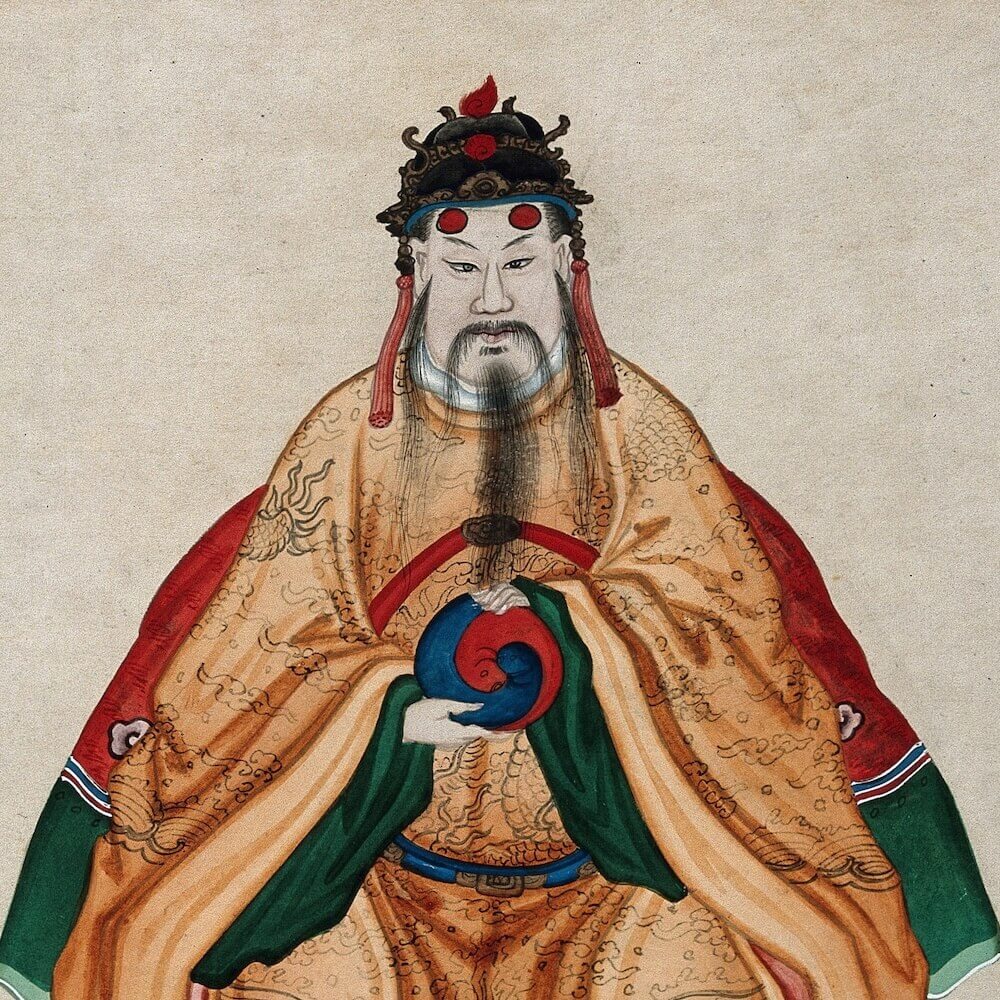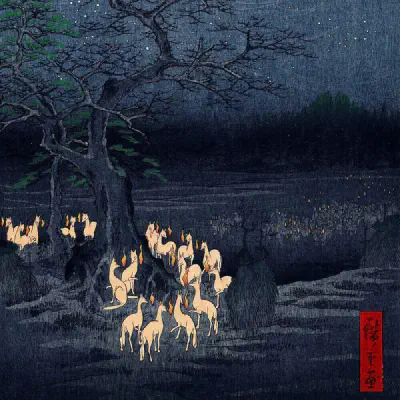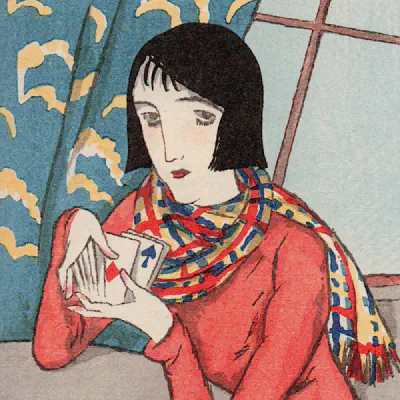This paper was written for the 2022 Yijing World Summit Forum. It’s about play and divination, and it won the 2022 first prize for essays on the Yijing (优秀易经论文一等奖).
This is a draft of the paper that I gave remotely at the 2022 Yijing World Summit Forum in Wuxi. I thought it would be good to share it here
The Strangeness of Divination
Divination seems to have little place in the contemporary world: it is weird, unsettling, irrational. And this presents those who want to take the Yijing seriously with a problem. How are we to understand this curious text that is so very central to Chinese traditions of thought? And given that the Yijing is incontestably a divinatory text, how are we to come to terms with the text’s sheer weirdness, with the penumbra of disrepute and superstition that surrounds the text?
One approach is to leave out the more ostensibly weird stuff altogether, to purge the Yijing of all its mantic uses, and to present the Yijing as a purely abstract, philosophical framework: a body of theory or a metaphysics. This approach constructs an idealised, abstract Yijing, in the hope that we can elevate the text to academic respectability by virtue of it having been shorn of all aspects of superstition. But this approach is fatal to any real understanding of the Yijing, as the denial that the Yijing is fundamentally about divination goes against pretty much the entire history of the text and its uses. As Zhu Xi 朱熹 (1130–1200) argued as far back as the twelfth century, the Yijing was created for the explicit purpose of divination: it is explicitly not an object for disinterested contemplation. Instead, it is a tool to be put to work, one that “enables everyone from kings and dukes to the common people to use it for self-cultivation [xiushen 修身] and ordering the state [zhiguo 治國].”
So if we are to take the Yijing seriously, we can’t avoid taking seriously the fact this is a text designed not just to be contemplated, but also to be used. So here, scholars often fall back on another approach. They agree that divination is central to the Yijing and its traditions, and they acknowledge this as something worthy of cultural study. Meanwhile, they seek to put some distance between the text’s own weirdness and their own scholarly sobriety. They explore culturally-embedded divinatory and mantic purposes of the Yijing not from the point of view of philosophy or metaphysics, but from the point of view of anthropology or the history of ideas. This approach allows the scholar to admit that the Yijing is pretty weird, while also making clear that studying the weird things other people do doesn’t make us weird ourselves.
This is a worthwhile, and indeed also necessary, approach to understanding the complexity of the Yijing in the many contexts in which it has flourished. But here I want to argue that there may be some merit to going one step further. Instead of studying the Yijing as a body of theory (the philosopher’s approach) or as a body of practice (the historian or anthropologist’s approach), here I want to argue for a more engaged approach to studying the Yijing. I want to propose that there may be some merit in studying the Yijing also as an activity: not just an activity in which other people might engage, but one in which we ourselves might engage. One might call this not the philosopher’s, historian’s or anthropologist’s approach to the Yijing, but the diviner’s approach: an approach in which we are not just studying the weird stuff other people do, but doing weird stuff ourselves.
From Belief to Play
Here, for many scholars at least, alarm bells will be ringing. Wouldn’t this kind of engagement necessarily entail taking leave of our academic senses? Wouldn’t it be succumbing to superstition and weirdness, taking leave of our critical faculties and embracing unreason? In making the move from “studying weird stuff other people do” to “I’m doing weird stuff”, wouldn’t we lose our claims to academic rigour, and be open to charges of succumbing to superstition? Does putting the Yijing to work mean that we have to open ourselves up to irrational beliefs?
Not necessarily. The idea that belief is a pre-requisite for making use of the Yijing is itself questionable. One thing that is remarkable about the Yijing is how fruitfully it has been used across culturally very varied contexts, by people who have very different and sometimes incompatible sets of beliefs. Not only this, but the core text of the Yijing doesn’t require that those who use the text subscribe to any determinate set of beliefs at all. As Zhu Xi himself noted, the Yijing has very little to say to us, very little to teach us: the Yijing doesn’t offer us a creed or a world-view; it doesn’t say anything about the world in particular. The Yijing, Zhu Xi argued in the Zhuzi yulei (朱子語類), or Classified Dialogues of Master Zhu, “is an affair that is empty to the very utmost.” So to use the Yijing, it is not necessary to subscribe to any set of beliefs except perhaps one: the belief that the Yijing is worth engaging with.
What would it mean to engage with the Yijing in this fashion? Here, I want to propose that once might engage seriously with the Yijing, while bracketing out questions of belief, by seeing the use of the Yijing as a kind of play.
To some, the idea of playing may seem to immediately trivialise the Yijing, as if to take this kind of playful approach to the Yijing is a way of diminishing the text and its traditions. But the reverse may in fact be true, as this is an approach that it is sanctioned by the tradition itself. The Xi Ci Zhuan, or the Commentary on the Appended Phrases, says this of the junzi, the superior person (which here I am glossing as “one skilled in the art of living”):
That which the one skilled in the arts of living delights in and plays with is the explanations of the lines [of the Yijing].
The text goes on to say,
Thus, the one skilled in the arts of living abides and contemplates [the Yijing’s] images, and plays with its explanations; they act and contemplate [the Yijing’s] changes, and play with its prognostications.
The character for “play” (wan 玩) recurs in the text, and repays closer reflection. In the Shuo Wen Jiezi (說文解字), the character wan is glossed as nong (弄), which indicates taking up or grasping a piece of jade in the hand. This physical experience of playing with an object is often extended metaphorically into the mental realm, as in this passage from the Xi Ci Zhuan. As Michael Nylan puts it, wan denotes the
tactile pleasure experienced when rolling something smooth around in the hand or the metal pleasure to be had from rolling something over in the mind or communicating one’s thoughts to like-minded people of comparable sensibilities.
To wan, to play, with the Yijing is not only to physically manipulate the yarrow stalks or the coins, enjoying the tactile pleasure that this brings, but also to turn over the images and the lines of the text in our mind as we contemplate the changes and play with prognostications.
Thinking About Play
However, to understand in more depth what this kind of playful engagement with the Yijing might mean, first we need to look more closely at the idea of play itself. What, after all, is play? We often assume the thing that marks play out from other activities is fun. But, as philosopher Ian Bogost has argued, fun isn’t most distinctive property of play. Instead, Bogost writes, what marks out play from non-play is the existence of boundaries and constraints. Play takes place somewhere: on a board, on a playing field, within a certain prescribed structure. Play always involves a playground, a place where play happens.
But what constitutes a playground? For Bogost, a playground has two properties: boundaries and contents. To enter a playground entails a constraint upon our freedom. In playing, we are not — as we might imagine — free to do anything we like. On the contrary, play involves accepting the constraints and boundaries, and then seeing how we can manipulate things within those constraints and boundaries. You enter the playground, you engage in manipulating the things you find there, and when you are done, you leave the playground again.
The second aspect of play is that this playground has contents: others with whom or with which we play. Here, I’m going to borrow a term from the philosopher Sarah Mattice’s analysis of play in Gadamer and in the Zhuangzi. Mattice writes about the others with whom or which we play as “playmates.”
Play has a built-in place of priority for playmates—”I play” is already “I play with others.”
Play is about an intimacy of relationship with others, with those things that are not us. In this relationship with playmates, we don’t just act upon playmates, but we find ourselves acted on in turn. We affect the things we find in the playground, and we are affected by them. Mutual play is mutual affectation, mutual transformation.
When exploring this mutual affectation, Mattice gives priority to human playmates. But, mindful of the claim in the “Autumn Floods” chapter of the Zhuangzi that the things (wu 物) of the world are innumerable, and that human beings are only one of these things, it is not unreasonable to extend this notion of playmates to include all things, whether human or not. In this view, playmates may be other living beings with whom we play: people, cats, dogs, hamsters. But equally, they may be other objects: pieces of jade we grasp with the hand, trees, juggling balls, game controllers and so on. Or they may be ideas, images or notions.
There’s one further aspect of play that we need to consider if we are to complete the picture. And that is the question of how we go about playing, or how we characterise the playful mode of engagement. Bogost writes that,
That’s what it means to play. To take something—anything—on its own terms, to treat it as if its existence were reasonable. The power of games lies not in their capacity to deliver rewards or enjoyment, but in the structured constraint of their design, which opens abundant possible spaces for play.
Play is always play as if the existence of the game we are playing were reasonable, even if we know it is not. We play on the chess board as if we are commanding great armies at war. Children play shop — endlessly trying to persuade their parents to come and buy nonexistent objects — as if they had real goods to sell, as if they themselves were really shopkeepers. We play the board game Monopoly as if we are rapacious capitalists buying up the entirety of the city for our own personal gain, even if we are not. In this way, play takes place in this under the sway of this subjunctive as if.
What this subjunctive “as if” does is that it blurs the old philosophical distinction between “is” and “ought.” When acting under the sway of the subjunctive, we are neither fully committed to saying “the world is like this”, nor are we saying “the world ought to be like this.” If anything, subjunctive play adds a third term to the series: is… ought… might. We are not dealing with what is the case, nor are we dealing with what ought to be the case. We are dealing with what might be the case.
The Yijing as Play
Here we have a relatively robust sketch of what is meant by the notion of play. First, play takes place on a playground that provides us with a certain set of constraints and possibilities. Second, play involves engaging with playmates—we engage with a small, bounded subset of the ten thousand things. And third, the way in which we interact with these things is subjunctively, or as if. But what does this mean for thinking about the Yijing?
With this provisional definition in place, it is possible to sketch out a picture of how the Yijing might function as a form of play. First, the Yijing presents us with a playground, or a series of playgrounds. The act of consulting the Yijing, whatever the broader cultural context, involves working creatively within multiple constraints: the rigorous structure of the text itself and the exhaustive list of sixty-four hexagrams; the sets of rules by means of which the text is consulted; the line statements and the formulaic patterns of the text itself.
Not only does the Yijing provide us with something like a playground, it also provides us with playmates. What are these playmates? Certainly, they are the images, ideas and words of the text itself that we roll around in our minds the way we might roll a ball in the palm of the hand. But the playmates we might find are not just internal to the text, but also a part of the broader context in which we are playing: the total situation in which we find ourselves. Consulting the Yijing (as in all forms of divination) is about bringing the text and the way we are playing the text into relationship with this total situation, inviting other playmates — ideas, images, possibilities — into the playground.
Here, incidentally, it is worth noting that there is no absolute boundary between what is properly considered a part of the playground and what is properly considered a playmate. The things (in the Zhuangzian sense of wu 物) with which we play are not just co-partners in the play, but also bring with them their own restraints and boundaries.
Take, for example, a cricket bat: it is a playmate insofar as it is an other with which we play; but it is also an aspect of the playground insofar as it contributes to the overall set of constraints within which the game is played. You can do things with a cricket bat that you can’t do with a tennis racquet, and vice versa: you are operating under different constraints. In the act of consultation, the Yijing is simultaneously both playground and playmate.
What about the final aspect of play: its subjunctive nature? Here, one might argue that, in a contemporary reading at least, this sense of the subjunctive is written into the fabric of the text itself (as the recurrence of the character ru 如 — “as if” — attests).
But there are other ways that the Yijing provides us with a subjunctive framework. One is that the Yijing is consulted by means of a ritualised procedure; and as Seligman and his colleagues write in their book Ritual and its Consequences: an Essay on the Limits of Sincerity, ritual is subjunctive insofar as it is “the creation of an order as if it were truly the case.” It is not necessary to approach the Yijing with the claim that its existence is reasonable: instead, all we need to do is treat it as if its existence were reasonable.
Reimagining the Yijing as a kind of play opens up the path to making new, creative and productive uses of the text, without committing ourselves to “believing in” the Yijing (whatever that would mean). All we need is a commitment to the idea that the game itself is worth playing. And then we are open to a broader exploration of what it might mean to engage in supple, subtle and creative ways with the Yijing, free from high seriousness and from explicit metaphysical commitments. This is what I myself tried to do when I approached the Yijing as a literary game in my book Sixty-Four Chance Pieces: A Book of Changes. It is consistent with many ways in which the Yijing has been used by others in the West; but it is also perhaps consistent with the broader history of divinatory uses of the Yijing in China.
It is my contention, then, that play offers us a way of taking the Yijing maximally seriously, without making any metaphysical commitments on the part of the text itself. It offers a way beyond simply contemplating the Yijing as an abstract philosophical or metaphysical system, and it goes a step beyond simply exploring the text as a significant cultural force. Instead, by engaging in the Yijing seriously as a game—bracketing out for a moment any claims to the Yijing’s reasonableness, or any explicit metaphysical claims—we might come to see the possibilities the text offers, and to understand something more of its enduring power.



